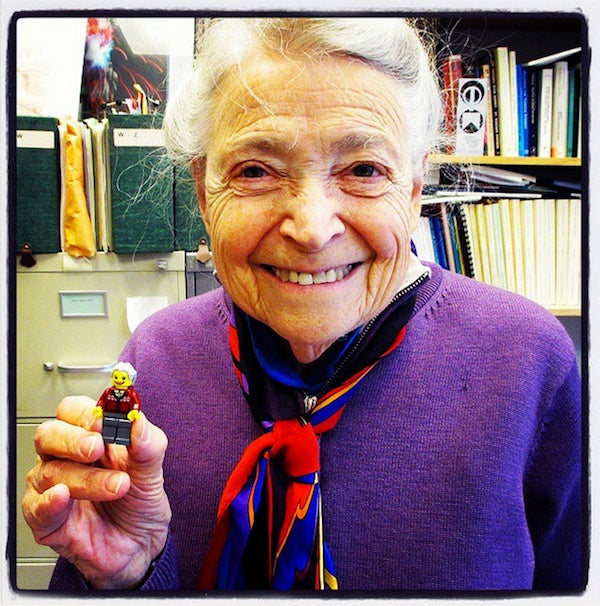This article was published in Scientific American’s former blog network and reflects the views of the author, not necessarily those of Scientific American
As we look back on 2017, it is once again time to commemorate some of the remarkable women recently passed who made critical contributions to the advancement of science, technology, engineering, and mathematics (STEM). In this fifth annual retrospective honoring women in these areas, we say goodbye and thank you to 12 individuals who made the world better through their research, innovations, and advocacy of women in the STEM fields.
Marian Diamond
On supporting science journalism
If you're enjoying this article, consider supporting our award-winning journalism by subscribing. By purchasing a subscription you are helping to ensure the future of impactful stories about the discoveries and ideas shaping our world today.
A founder of modern neuroscience, Marian Diamond of the University of California at Berkeley made seminal discoveries on the plasticity of the human brain. Known for studying Albert Einstein's preserved brain, she was the first to show neurons can change and even improve with the right environmental stimuli. Diamond passed away at age 90 on July 25.
Mildred Dresselhaus

The "Queen of Carbon Science," Mildred "Millie" Dresselhaus was a powerhouse MIT physicist and engineer who made enormous strides in the understanding of materials' electronic properties. Among her countless honors, Dresselhaus received the Presidential Medal of Freedom from Barack Obama in 2014, and starred last year in a viral GE video celebrating women in STEM. She died on February 20 at age 86.
Lisa Hardaway
A longtime Ball Aerospace engineer, Lisa Hardaway was program manager for Ralph, the imaging instrument on NASA’s New Horizons spacecraft that brought Pluto and Charon into focus during its 2015 flyby. Hardaway also contributed to the International Space Station, Chandra X-Ray Observatory, and Deep Impact programs. She died of cancer at age 50 on January 24.
Lilli Hornig
As a Czechoslovakian-born chemist on the Manhattan Project at Los Alamos, Lilli Hornig was a key contributor to the development of the atomic bomb. Later in her career as an academic at Brown University and Trinity College in Washington, she became a fierce advocate for women in the sciences. Hornig was 96 when she died on November 17.
Isabella Karle
A career chemist at the U.S. Naval Research Laboratory, National Medal of Science winner Isabella Karle made pioneering contributions to our understanding of molecular structures. Her crystallography experiments proved her husband's molecular theory that won him—but not her—a Nobel Prize in chemistry. Karle died on October 3 at age 95.
Claude Klee
Considered a giant among biochemists at the National Institutes of Health, French-born Claude Klee made critical advances concerning the regulation of cell processes by calcium. She discovered, for example, the enzyme calcineurin, a current target of therapies to prevent transplant rejection. Klee was 85 at her death on April 4.
Irene Leverton
Trailblazing pilot Irene Leverton was one of the Mercury 13, a group of American women who trained privately to become astronauts in the early 1960s. Despite strong marks, Leverton and the others were barred from applying to NASA's astronaut corps due to their sex, and it would be another two decades before NASA finally let women fly into space. Leverton, who accumulated nearly 26,000 flight-hours as a pilot-in-command through 2011, died on July 23 at age 90.
Maryam Mirzakhani
A rock star of mathematics, Iranian-born Maryam Mirzakhani of Stanford University achieved global fame in 2014 when she became the first woman to win the prestigious Fields Medal— math's top honor—for her work on Riemann surfaces and their moduli spaces. She died of cancer at age 40 on July 14.
Cathleen Morawetz
Former president of the American Mathematical Society and National Medal of Science winner Cathleen Morawetz of New York University was a celebrated mathematician whose work focused on partial differential equations and problems related to the flow of fluids and waves. She died on August 8 at age 94.
Isabelle Rapin
Swiss-born Isabelle Rapin played a significant role in developing our modern understanding of the biology of autism. A professor emerita at Albert Einstein College of Medicine, Rapin popularized the term "autism spectrum disorder" as well as the idea that autism is expressed in many ways. She was 89 when she died on April 24.
Marina Ratner
Marina Ratner was a noted Soviet-born mathematician who flourished as a scholar at the University of California at Berkeley. She's best known for her influential Ratner’s Theorem, which describes the motion of objects in various dimensions. She died July 7 at age 78.
Jean Sammet
A legendary computer science pioneer, Jean Sammet co-developed the programming language COBOL and led the development of FORMAC and of the Ada language at IBM. She was also the first female president of the Association for Computing Machinery. Sammet was 89 when she passed away on May 20.